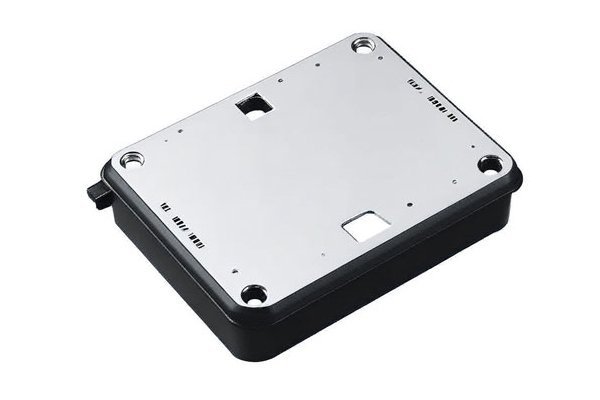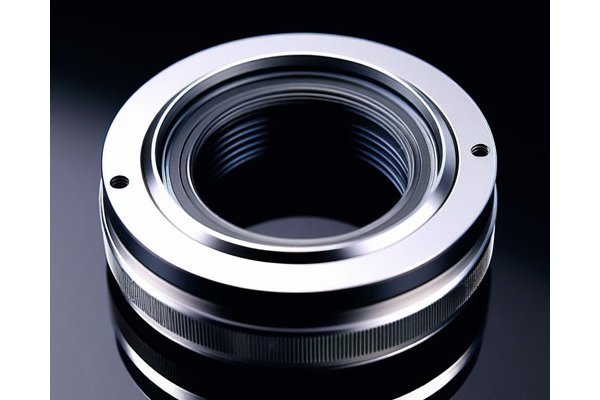Did you know that the global CNC machining market is projected to reach over $100 billion by 2025? This astounding figure highlights just how essential CNC machining has become in various manufacturing processes, particularly in the production of custom plastic designs. In today’s fast-paced technological landscape, manufacturers are constantly on the lookout for efficient, precise, and cost-effective ways to create bespoke parts, and CNC machining offers a compelling solution.
The Role of CNC Machining in Custom Plastic Design
CNC (Computer Numerical Control) machining is a cutting-edge manufacturing process that utilizes pre-programmed software to control the movement of machining tools. This technology allows for an unparalleled degree of precision and repeatability, making it ideal for producing custom plastic components in various industries, from automotive to medical devices.
As we navigate the complexities of modern manufacturing, understanding the unique benefits of CNC machining for custom plastic designs can help businesses optimize their production processes, reduce costs, and increase overall efficiency. Let’s explore several reasons why CNC machining stands out as a preferred method for creating custom plastic components.
The most significant advantage of CNC machining is its ability to produce highly precise and accurate parts. This capability is particularly vital in industries such as medical devices, aerospace, and electronics, where even the slightest variation can lead to product failure or safety hazards.
CNC machines are programmed with CAD/CAM (Computer-Aided Design and Computer-Aided Manufacturing) software. When a design has been inputted into the system, the CNC machine can replicate that design down to the minutest detail. This level of accuracy cannot be achieved with traditional machining methods, offering an edge in quality and performance.
CNC machining is exceptionally versatile, capable of producing intricate shapes and designs that would be challenging or impossible to attain through manual machining methods. This versatility allows businesses to explore innovative designs without worrying about the constraints of traditional machining techniques.
From complex geometries to tight tolerances, CNC machining can handle it all, making it a suitable option for various applications. This flexibility also means manufacturers can easily adapt their designs and introduce new products with minimal downtime.
In manufacturing, waste is not only an environmental concern but also a financial one. CNC machining optimizes material usage, significantly reducing waste compared to traditional production methods. Additionally, the programming capabilities of CNC machines allow manufacturers to calculate the best way to lay out parts on the raw material, ensuring that every inch is utilized effectively.
This enhanced efficiency translates into cost savings, allowing businesses to lower their production expenses and improve their bottom line.
In today’s competitive landscape, speed is of the essence. Companies are often required to bring products to market quickly to stay ahead of their competitors. CNC machining excels in reduced lead times due to its ability to automate processes and streamline production.
Once a design is finalized, machines can operate 24/7, significantly increasing output rates. Furthermore, the rapid programming and setup associated with CNC machining means that companies can quickly pivot from one project to another, allowing for quicker customization and flexibility.
For businesses that require large quantities of custom plastic parts, repeatability is essential. CNC machines have the ability to reproduce parts consistently and accurately over extended production runs. This repeatability ensures that each component meets the established specifications and quality standards.
In high-volume production, the risks associated with human error in manual processes are greatly diminished, resulting in reliable and uniform quality across individual parts.
CNC machining offers the unique advantage of integrating various machining processes into one streamlined workflow. Manufacturers can perform milling, turning, drilling, and other operations all within the same machine setup. This multi-functionality reduces the need for multiple machines and operators, leading to increased efficiency and lower overhead costs.
Seamless integration of multiple processes also lessens the chance of errors that could arise from transferring parts between different machines.
One of the most significant benefits of CNC machining is its ability to provide extensive customization. Whether it’s producing a one-off prototype or a batch of custom plastic components, CNC technology allows for high flexibility in design modification.
Manufacturers can quickly adjust their design specifications, enabling them to fine-tune their products to meet specific customer needs or design constraints. This adaptability is essential in today’s ever-evolving market, where customer preferences can change rapidly.
CNC machining can accommodate a wide array of plastic materials, including thermoplastics and thermosetting plastics. From polycarbonate, acrylic, and nylon to PVC and polyethylene, the choice of materials allows manufacturers to select the best options based on their specific application requirements.

Not only does this versatility enable manufacturers to find the most cost-effective solutions, but it also allows them to utilize materials that offer improved performance characteristics tailored to their design objectives.
When considering the advantages of CNC machining, one of the most compelling factors is cost-effectiveness. Although the initial investment in CNC machines and technology may be significant, the long-term savings generated by optimized processes, reduced waste, and improved efficiency can far outweigh these initial costs.
Moreover, the reduction in labor costs associated with automating processes adds to the overall savings, making CNC machining an attractive option for businesses looking to maintain their competitive edge.
As industries continue to evolve with advancements in technology, CNC machining provides a pathway for future-proofing manufacturing processes. Its integration with Industry 4.0 solutions, such as IoT (Internet of Things) and AI (Artificial Intelligence), positions CNC machining as a critical component of modern manufacturing.
By leveraging data analytics and machine learning algorithms, businesses can gain valuable insights into their production processes, enabling continuous optimization and innovation.
Implementation of CNC Machining in Custom Plastic Designs
Step 1: Design Development
The first step in the CNC machining process is developing a design. Using CAD software, engineers can create detailed 3D models of the desired components. This phase allows for extensive visualization and adjustments to ensure that the design meets functional and aesthetic requirements.
Step 2: Material Selection
Once the design is complete, selecting the appropriate plastic material is crucial. Considerations such as strength, heat resistance, and chemical compatibility will guide this choice. Manufacturers should work closely with material suppliers to ensure their chosen plastics meet the necessary specifications.
Step 3: Programming
With the design finalized and material chosen, the next step is programming the CNC machine. This process involves translating the CAD design into a precise set of instructions that the machine can follow. Skilled operators must carefully input parameters such as cutting speed, tool selection, and feed rates to ensure optimal machining performance.
Step 4: Machining and Prototyping
During the machining phase, the CNC machine precisely removes material from the plastic workpiece according to the programmed instructions. This phase may also involve creating prototypes for testing and evaluation. Prototyping allows for practical assessment of the design, enabling manufacturers to make adjustments before proceeding to production.
Step 5: Quality Control
Quality control is an essential aspect of the CNC machining process. Regular inspections during production ensure that parts meet the desired specifications and tolerances. Any discrepancies are addressed immediately to prevent faulty components from proceeding through the production line.
Step 6: Final Production
Once the design is validated and the quality is assured, the final production phase begins. CNC machines can work on large quantities of parts without sacrificing quality, allowing businesses to fulfill customer orders swiftly and efficiently.
Step 7: Post-Processing
After machining, finished parts may require additional post-processing steps, such as surface finishing, painting, or assembly. Manufacturers can enhance the appearance and functionality of the components in this stage.
The integration of CNC machining in the production of custom plastic designs presents an array of benefits that can significantly enhance manufacturing processes. From unparalleled precision and repeatability to reduced waste and quick turnaround times, CNC machining serves as a powerful tool for businesses in various industries.
As companies increasingly embrace customization to meet consumer needs, understanding the advantages of CNC machining will become increasingly vital. Whether it’s ensuring high-quality components, optimizing production efficiency, or reducing costs, CNC machining is a valuable asset in the manufacturing landscape.
Ultimately, the world of manufacturing is continually evolving, and staying ahead in this competitive environment requires a keen understanding of the technologies at play. By leveraging CNC machining for custom plastic designs, businesses can position themselves for success in a rapidly changing marketplace. These advantages make investing in CNC technology an essential consideration for any manufacturer looking to thrive in today’s economy.






